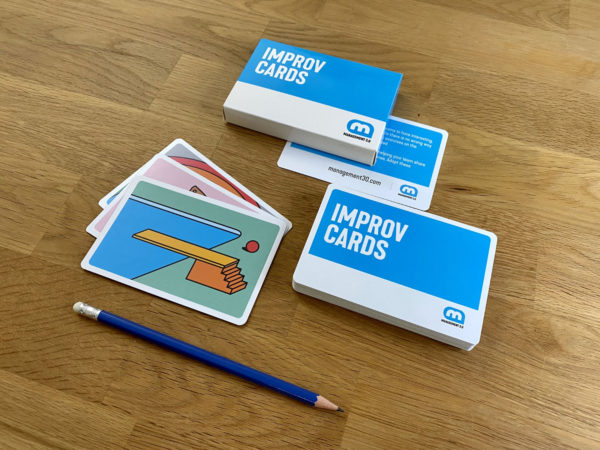by Sam at Management 3.0
Storytelling is one of the most important ways to convey and relay information, to open teams up, improve collaboration and enhance communication.
Telling stories helps bring people together because it takes them out of their comfort zones.
At Management 3.0 we believe storytelling can relay powerful statements and can be a place where new ideas blossom.
Unconvinced?
Here are a few ways for how storytelling can help teams better communicate, collaborate and work together:
Storytelling Boosts Listening Skills
When colleagues tell stories, other colleagues are forced to listen or risk being called out for not being engaged. But embarrassment aside, listening to people’s stories is an excellent way to hone active listening skills by asking follow-up questions to what people are saying. When we listen actively to someone’s story they also feel heard and seen and this is important when building trust.
Storytelling is a way for leaders to embody change
Leaders can establish credibility by telling stories about what they’re doing and how they’re living. The more a leader tells stories passionately and with conviction, their stories resonate with employees and this can fuel creativity and collaboration. Stories about experiences, personal or professional, bring a vulnerability to the table that leaders often mask, which can fuel trust.
Storytelling decodes charts
Sometimes there’s no better way to dissect a hard-to-understand chart, than by turning it into a story. Leaders have to remember that not everyone on the team is capable of understanding graphs and charts in the same way and so when trying to break something down one of the easiest ways to do that is by converting the numbers and lines into an easy to digest story.
Storytelling connects us emotionally to an event
When we add drama to a situation, we experience it emotionally and this charges an event thus releasing dopamine and making the story easy to remember. Our brains like stories that involve challenges with the promise of an achievement, so adding an element of drama can help people feel connected to the subject and make it harder to forget. As a manager, this is important if you want your teams to refer back to a specific situation or if you want to remind them of the message from that story, you can easily reference the event.
Storytelling Encourages Openness and Honesty
The essence of storytelling is speaking to people about something that’s important to you in a way that will hook others and also relay a message. The only way to do this is by being honest. Storytelling reinforces the importance of honesty and emphasizes the role that being open and transparent can and does play in creating strong teams.
Now that we understand why storytelling is useful, here are a few quick tips:
How can we become great storytellers?
Make it personal
Find something in the story that speaks to your audience. That means, you have to know your audience. Don’t tell a story about eating fabulous steaks to a vegan crowd. Do your research and tell the story in a way that can help people connect to the subject.
Include context
People need to know why you’re telling the story you’re telling. Give them context before and during, to help them better connect and understand the reason things matter. Stories are much more than words strung together in sentences. They’re meant to connect puzzle pieces and help people understand why this matters. It’s better to give more information than less, so if you aren’t sure whether or not you should include something, best to give that extra detail.
Use a hook to rope people in
Like any good speech or talk, start with a quote or an anecdote to draw people in. Get them interested in what you have to say in the first five seconds and you’ll have them eating out of the palm of your hand for the rest of the speech. You can even start with a game like Improv Cards, to get people moving and engaged. But it’s also important, once hooked, to keep them roped in. So be sure to use the opening hook as a thread throughout the rest of your story. Bring people back to it and as we mention in number two, make sure the hook helps give context as well.
What are some tips you have for good storytelling?


